![[Heiden]](../images/c/ch-ar004.gif)
Flag of Heiden, Switzerland
![[logo flag]](../images/v/vxt-d4080.gif)
![[logo flag]](../images/v/vxt-d4081.gif)
![[logo flag]](../images/v/vxt-d4079.gif)
Flag of CRAF, France;
Flag of Brussels Region, Belgium;
A Flag of Apple Inc., US
Please note that these terms are often misapplied, and care should be taken to ensure that the device being described is not a seal, badge or emblem as referenced above.
![[Nebraska]](../images/v/vxt-d1689.gif)
![[Kentucky]](../images/v/vxt-d2506.gif)
![[Michigan]](../images/v/vxt-d1690.gif)
Flags of the States of Nebraska,
Kentucky
and Michigan, US
Notes
The Editors suggest a considerable degree of caution when using this term for the
following reasons:
a) In US usage flags of this type are often derived from previously established military
colours – colours under which men fought and died – and such a description ignores their
historical significance.
b) When correctly used the term "logo" has a specific, totally different meaning, and
its employment here is both inaccurate and (apparently) unthinking.
c) The definition given above could equally apply to several types of flag (for example
the civic/municipal flags of Japan) to which any such implication would be inappropriate.
![[Texas flag]](../images/v/vxt-d380.gif)
Flag of the State of Texas, US
![[Civil ensign of Jerusalem]](../images/v/vxt-d1868.gif)
Civil Ensign of Jerusalem 1333–1921
![[loops on a flag]](../images/v/vxt-d4571.gif)
![[loops on a flag]](../images/v/vxt-d1009.gif) |
![[loops on a flag]](../images/v/vxt-d4379.gif) |
Please note that this is practice is almost certainly based on the earlier use of ties – see ‘ties’.
![[Lord High Admiral flag]](../images/v/vxt-d330.gif)
Flag of The Lord High Admiral 1685–1688, England
![[Cross of Lorraine]](../images/v/vxt-d1841.gif)
![[Cross of Lorraine]](../images/v/vxt-d1841a.gif)
Flag and Arms of Skaryszew, Poland
2) In heraldry a diamond shape, usually shown with its upper and lower angles slightly acute – but see the note below, ‘square lozenge’ and ‘fusil’ (also ‘lozengy’, ‘lozengy bendy’ and ‘voided lozenge’).
![[lozenge]](../images/v/vxt-d1840.gif)
![[Brazil flag]](../images/v/vxt-d912.gif)
![[lozenge]](../images/v/vxt-d1645.gif)
Flag of Alem Paraíba, Brazil;
National Flag of Brazil;
Flag of Ceará, Brazil
Please note with regard to 2), that in English heraldry a lozenge is also the escutcheon upon which a spinster or a widow’s coat of arms is placed (see also ‘armorial bearings’, ‘escutcheon’ and ‘coat of arms’).
![[Escutcheon example]](../images/v/vxt-d2420.gif)
Escutcheon of Kate Middleton before her marriage to HRH Prince William
![[lozenge-throughout]](../images/v/vxt-d4082.gif)
![[lozenge-throughout]](../images/v/vxt-d1648.gif)
![[lozenge-throughout]](../images/v/vxt-d2635.gif)
Flag of O. D. Ahlers, Germany;
Flag of KPM, The Netherlands;
Flag of Cabezarrubias del Puerto, Spain
These are not established terms but have been introduced by the Editors since no established alternatives could be found.
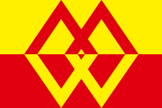
Flag of the Morlanwelz, Belgium
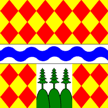

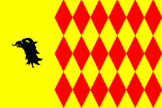
Banner of Arms of Le Locle, Switzerland;
Flag of Trinta-e-um de Janeiro 1941–1975, Angola;
Flag of Balenyà, Spain
Please note however, that on flags this term may also be applied to a field covered with lozenges or diamond shapes set at an angle such as those on the flag of the German state of Bavaria, whereas in heraldic practice these would be lozengy bendy (or bendy sinister).
![[a Lozengy flag]](../images/v/vxt-d200.gif)
![[Lozengy]](../images/v/vxt-d4381.gif)
![[Lozengy]](../images/v/vxt-d4382.gif)
The Flag with Variant and Greater Arms of the State of Bavaria, Germany
![[Lieutenant Colonel’s Colours example]](../images/v/vxt-d2389a.gif)
![[Lieutenant Colonel’s Colours example]](../images/v/vxt-d2389b.gif)
![[Lieutenant Colonel’s Colours example]](../images/v/vxt-d2389c.gif)
![[Lieutenant Colonel’s Colours example]](../images/v/vxt-d2389d.gif)
![[Lieutenant Colonel’s Colours example]](../images/v/vxt-d2389e.gif)
Examples of Lt Colonel’s Colours, English c1641 (Željko Heimer, CS and fotw)
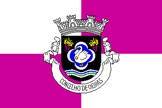

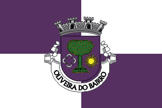
Flag of Oeiras, Portugal;
Arms and Flag of Oliveira do Bairro c1986, Portugal
Notes
![[lymphad]](../images/v/vxt-d220.gif)
![[lymphad]](../images/v/vxt-d232.gif)
Banner of Arms of the
Western Isles, Scotland; Flag of
Gzira, Malta
a) A vessel with oars but more than one mast should be blazoned "galley"
– see ‘galley’.
b) In English heraldry a single-masted, medieval nef or cog (with or without oars)
is often (but not exclusively) blazoned an "ancient" or "antique ship" – which
term can (and does) include sailing vessels with more than one mast – see
‘ancient ship’,
‘cog 2)’ and
‘nef’.


![[Fourth canton]](../images/v/vxt-d1576d.gif)
![[Third canton]](../images/v/vxt-d1576c.gif)
![[lowered]](../images/v/vxt-d1267.gif)
![[lowered]](../images/v/vxt-d2254.gif)